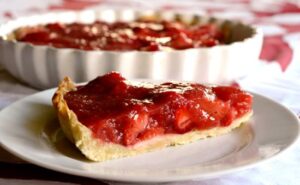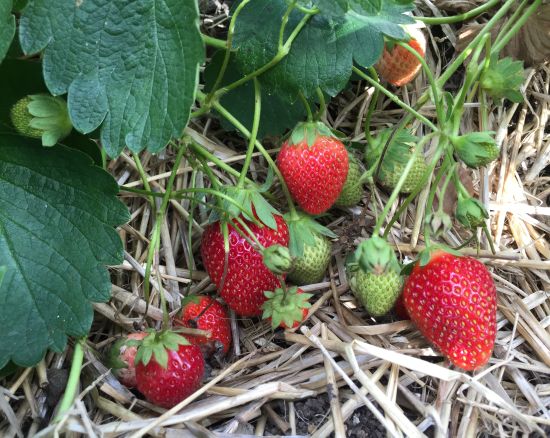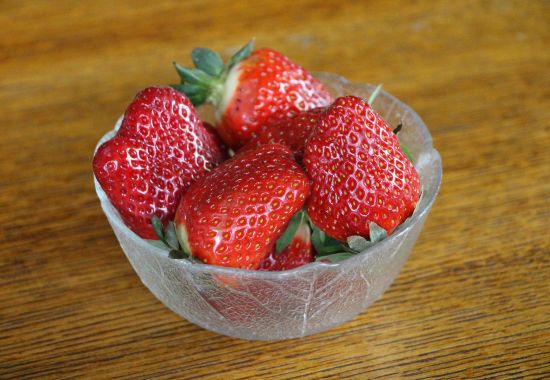
Freshly-picked strawberries from your garden are a rich source of health-promoting phyto-nutrients, minerals and vitamins essential for optimal health.
In particular fresh berries are an excellent source of Vitamin C, a powerful natural antioxidant. Consumption of fruits rich in vitamin C helps the body develop resistance against infectious agents, and counters inflammation.

They need full sun and good drainage. If drainage is a problem grow the plants on a mound, especially if you have a clay soil.
It’s best not to plant where strawberries, raspberries or any potato/tomato type plants have been grown before. This will reduce the risk of soil-borne disease build-up. Open, airy conditions will minimise fungal disease problems.
Strawberry plants are fine to leave in situ for 3-4 years. After that root diseases and virus build-ups tend to weaken the plants. Then it’s time to start new plants from the runners, or purchase new ones.
When preparing the garden bed, dig in plenty of compost or organic matter to help with moisture retention. Strawberries like a more acid soil of between 5.5 and 6.0 pH, so adding peat moss to your soil will help with this. Plant about 15cm apart and make sure you keep the crown, which is the part just below the leaves, just above ground level.
When planting you can lay newspaper around the plants and put mulch on top of that. In spring, when the plants are starting to bear their fruit, put straw down around the plants. This helps as a weed suppressant and mulch. The fruit will sit on top of the straw and stay clean and is less likely to rot from contact with the soil.
Apply a liquid seaweed fertiliser or a liquid fertiliser you’ve made up yourself every couple of weeks. See here for how to make liquid fertiliser. This supplies trace elements to the plants, as well as prevents most fungal diseases. Liquid feeding is beneficial especially for container-grown plants.

Birds are the main pest, but slugs may also be a problem. Remove dead foliage from the plants to help minimise disease and housing of pests, and cover the plants with netting just before fruiting begins.
In late summer strawberry plants will send off runners and these can be turned into new strawberry plants. Make sure your parent plant is healthy. The most vigorous runner tends to be the first one off the main clump, but you can try planting several runners.
See here for how to create new plants out of the runners.
Website designed by www.thecornerstorecollective.com
Developed by Richard Hpa